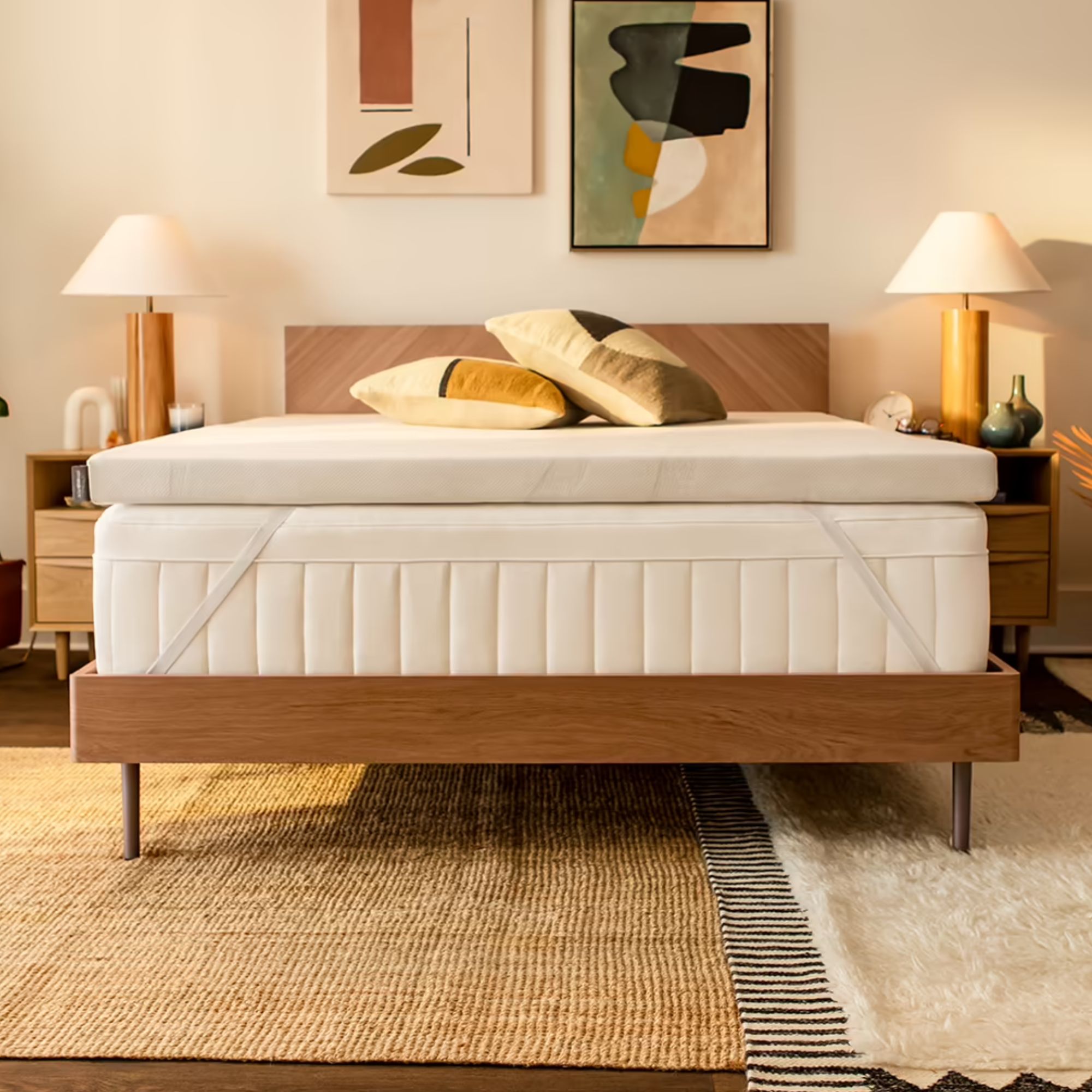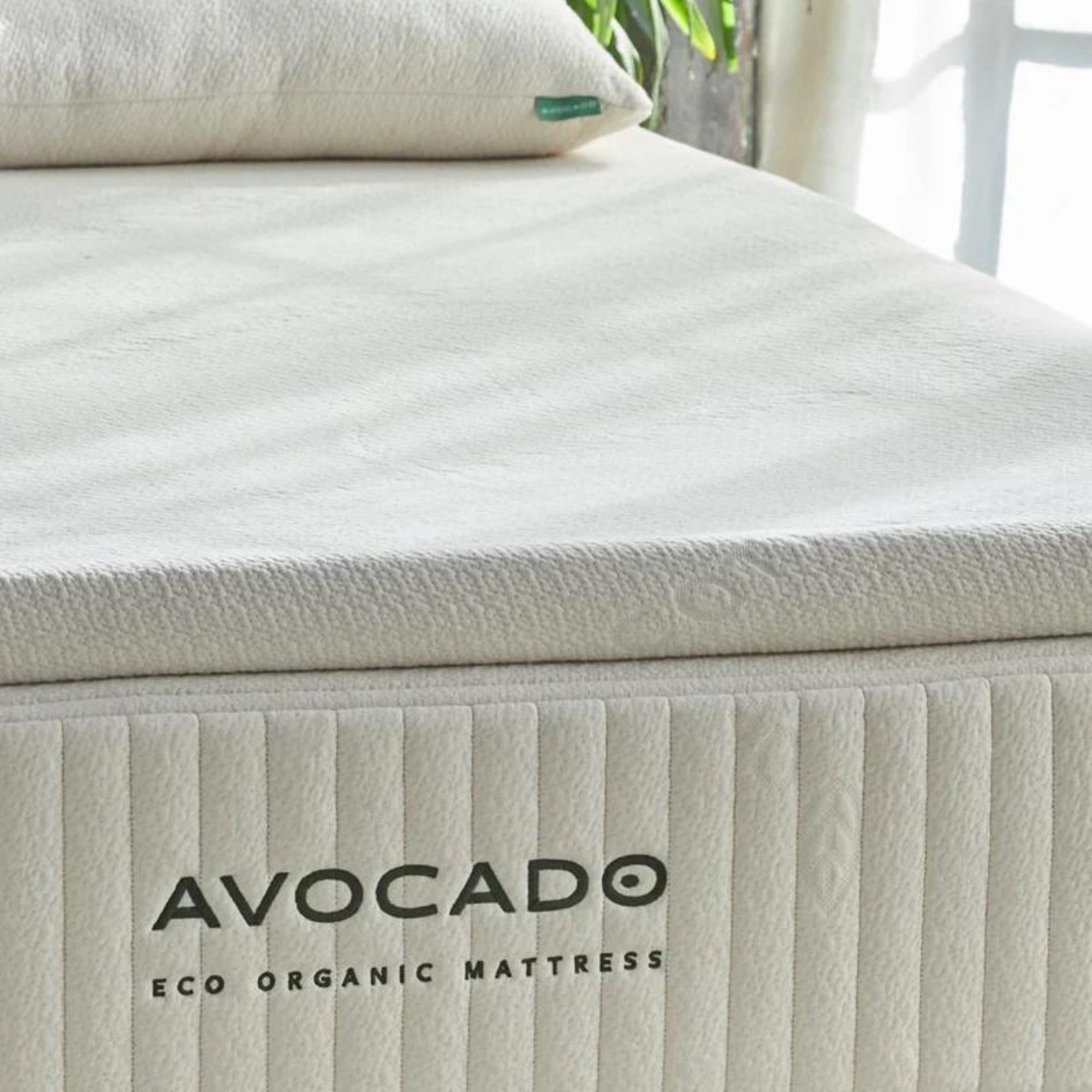Can I make my mattress firmer? Yes − here's how
I asked sleep scientists and mattress manufacturers how to toughen up a soft, sagging mattress for more supportive sleep


Q: I have a soft mattress and I think it might be giving me lower back pain. Can you make a mattress firmer or do I need to replace it?
This is a snippet from an email I received recently. It's a good question. It got me thinking about all the uncomfortable nights I've spent on soft, sagging mattresses and the tips I've picked up to make them feel firmer.
You could place a piece of plywood between your mattress and your bed base for more consistent support. You could purchase one of the best mattress toppers as a short-term solution. Turning your mattress is the quickest and easiest way to make it feel firmer without spending a cent.
Even the best mattress will start to sag eventually. Luckily, there are ways to make a soft mattress feel firmer while you wait to buy a new one. I spoke with sleep scientists and mattress manufacturers to learn their tips and tricks to make a mattress firmer for more supportive sleep.
Can I make my mattress firmer? 4 expert tips
I asked Thomas Høegh Reisenhus (Senior Front-End Innovation Manager, Tempur-Pedic) why it's so important to sleep on a supportive mattress. He says: 'A quality mattress is more than the difference between a good night's sleep and a bad one. It's the difference between enjoying good mental and physical health versus struggling with long-term health and performance challenges.' Here's how to fix a sagging mattress to get better sleep overnight and feel looser in the mornings.
1. Invest in a firm mattress topper

A firm mattress topper could prolong the life of a soft, sagging mattress while you wait to buy a new bed. In terms of mattress topper types, you're looking for something like natural latex or high-density memory foam.
I specify 'high-density' because you don't want the soft, squishy stuff. You need firm, supportive foam to mold to the shape of your body without letting you sink into the mattress. Density is measured in pounds of foam per cubic foot: the denser the foam, the more supportive it feels. I suggest 5lb memory foam. (Don't worry if some of these terms are new to you: you can always cross-reference against my mattress jargon buster).
Design expertise in your inbox – from inspiring decorating ideas and beautiful celebrity homes to practical gardening advice and shopping round-ups.
Now, the denser the foam, the more it might trap heat. This could prove problematic for hot sleepers or anyone living in warmer climates. If you suffer from night sweats or hot flashes, you should narrow the search to one of the best cooling mattress toppers. You can get memory foam mattress toppers infused with cooling gels to dissipate heat and wick moisture.
For natural cooling and springy support, I recommend a latex mattress topper. 'Latex is a great mattress topper material since it has such responsive support,' explains Jin Chon, co-founder of the luxury bedding brand, Coop. 'Latex is a material that you can sleep on, unlike low-density memory foam, which sinks.' Jin says that a firm mattress topper should help to distribute weight evenly across the mattress and prevent your pressure points from sinking. 'A thicker mattress topper is better than a thin one,' she adds: 'you want three inches or thicker.'

'Ever since I moved to New York, I've been bouncing around rental mattresses in apartments across town,' says expert tester Alexandra Pamias. 'I've spent too many nights with springs digging into my side as the coils creak beneath my body weight. Since I started sleeping on the Tempur-Adapt Tempur-Topper, I've noticed a big improvement in my spinal alignment and overall sleep quality.' Save 40% when you shop with our code TOPPERS40.
You can find more detail in our Tempur-Adapt Tempur-Topper review.

This latex mattress topper comes in two comfort levels to suit different sleep positions. I'd recommend the Medium topper, filled with firm Dunlop latex, for back and stomach sleepers, as well as anybody working with a soft, sagging mattress. 'It's made a real difference to my sleep experience,' says expert tester Antonia Santoro. 'My mattress still feels firm, but now it has a cushioning layer to support my body's natural curves.'
You can find more detail in our Avocado Organic Latex Mattress Topper review.

Our expert tester, Jamie Davis Smith, rates the Nolah Mattress Topper for its excellent edge support and near-perfect pressure relief. Since she started sleeping on a firm mattress topper, she's found that her lower back ache has significantly decreased. As soon as she got past the initial smell of mattress off-gassing, she was in love.
You can find more detail in our Nolah Mattress Topper review.
2. Turn your mattress

Take a good look at your mattress and map out the lumps and bumps. Consider whether the whole of your mattress feels soft or only certain areas. It might be that specific zones of your mattress are under considerable strain, leading to sagging and loss of support. Think about it: if you tend to sleep in the same section of your mattress each night, it's no wonder that this section will start to lose support faster than the bits of the mattress you don't touch as much.
'Over time, the materials in your mattress start to compress and break down, making it less supportive,' explains sleep scientist Hafiz Shariff. 'Flipping or rotating your mattress can help to redistribute those materials and restore some of the firmness.'
I asked an expert panel of mattress manufacturers: 'how often should you turn a mattress?' Best practice is once a quarter, so that you can distribute wear and tear evenly across the mattress. Fair warning: you should only flip your mattress if it's double-sided: that is, if the mattress construction is roughly the same on top as it is at the bottom. A classic innerspring is a good example of a double-sided mattress. Otherwise, you should rotate your mattress.
3. Check the foundations

If you tried turning your mattress, but it hasn't made much of a difference, then the problem might not be your mattress, after all. Perhaps the loss of support is coming from your bed base.
Even the best bed frames can become loose and move over time. When you're in bed at night, listen out for squeaking and creaking and feel around to spot the sagging. To get a better look at your base, lift up your mattress and inspect for broken or cracked slats. If you've got an adjustable bed, play around with the controls to create a level, supportive base.
4. Place a plywood board beneath your mattress

This is a trick I've picked up from mattress testing. If your mattress is too soft, but you don't want to buy a new mattress or a new foundation, then you could use a plywood board as a makeshift mattress base. It's an easy, affordable way to create a solid, flat surface and lend more consistent support to your mattress.
You could cut a piece of plywood if you're feeling handy or buy a wooden mattress support from Amazon. Don't worry too much about the thickness of the wood – an inch of plywood could easily do the job. Place the board between your mattress and your bed base, making sure it's sitting in the center for even support either side of the mattress.
FAQs
Will a firm mattress help my back pain?
A firm mattress might help with your back pain. A firm surface could help to distribute your weight evenly across the mattress, stopping your pressure points from sinking in and promoting proper spinal alignment. Still, even the best firm mattress can't cure back pain: that's something you should take up with a doctor.
Can a firm mattress cause back pain?
I asked sleep scientists and chiropractors to explain why your mattress might be causing your back pain and what you can do about it. A firm mattress could cause back pain if it pushes on your pressure points and throws your spine out of alignment. This would be a particular problem for side sleepers, who need a mattress with a bit of give to cushion their joints. It's all about finding the best mattress firmness for you: sufficiently supportive, without feeling inflexible.
If you've tried everything, and you still can't sleep comfortably on your soft mattress, then it might be time to invest in the best firm mattress. I've ranked and reviewed classic innersprings, high-tech hybrids, and high-density memory foam models to relieve pressure, ease pain, and keep your spine aligned.

Emilia is our resident sleep writer. She spends her days tracking down the lowest prices on the best mattresses and bedding and spends her nights testing them out from the comfort of her own home. Emilia leads a team of testers across America to find the best mattress for every sleep style, body type, and budget.
Emilia's quest to learn how to sleep better takes her all around the world, from the 3Z mattress factory in Glendale, Arizona to the Hästens headquarters in Köping, Sweden. She's interviewed luxury bedding designers at Shleep and Pure Parima, as well as the Design Manager at IKEA. Before she joined Homes & Gardens, Emilia studied English at the University of Oxford.